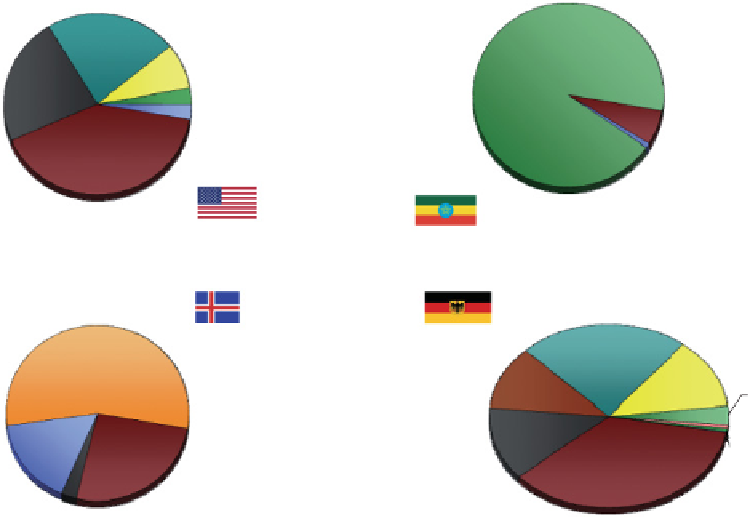Environmental Engineering Reference
In-Depth Information
Big differences also exist between the industrialized countries, however. Whereas
many of them, such as Germany and the USA, use fossil fuels or nuclear energy to
cover more than 80% of their primary energy requirements, certain other industrial-
ized countries have already increased their share of renewable energy use consider-
ably. The countries of the Alps, Norway and Sweden use a noticeably high proportion
of hydropower. Biomass also plays a big role in some countries like Sweden and
Finland. In Iceland the natural heat of the earth is the energy form with the highest
share. Hydropower and geothermal energy together cover around 70% of Iceland's
energy requirements.
Ethiopia, on the other hand, is a typical example of one of the poorest countries in
the world. More than 90% of the energy it uses is still based on traditional biomass.
Figure 1.7 shows the difference in how four countries use key forms of energy to
cover their energy needs.
natural gas
23
%
nuclear
power
8
%
biomass
2.8
%
hydropower
2.7
%
biomass
93
%
hard coal
23
%
crude oil
6
%
hydropower
1
%
crude oil
40
%
USA
Ethiopia
Iceland
Germany
geothermal
energy
55
%
natural gas
23
%
nuclear
12.5
%
lignite
11
%
biomass
3.3
%
wind
0.7
%
hydropower
0.5
%
solar and
geothermal
0.1
%
hard coal
13
%
hydropower
16
%
crude oil
26
%
crude oil
36
%
hard coal
3
%
Figure 1.7
Percentage of different energy sources covering primary energy requirements in Ethiopia,
Germany, Iceland and the USA in 2005.
1.3 'Anyway' Energy
According to statistics, only less than one percent of Germany's primary energy con-
sumption was covered by solar energy in 2005. In the UK and the USA the percent-
age is even lower. The proportion of other renewable energies is also still quite low.


